Engines: Powering the future
11 February 2019
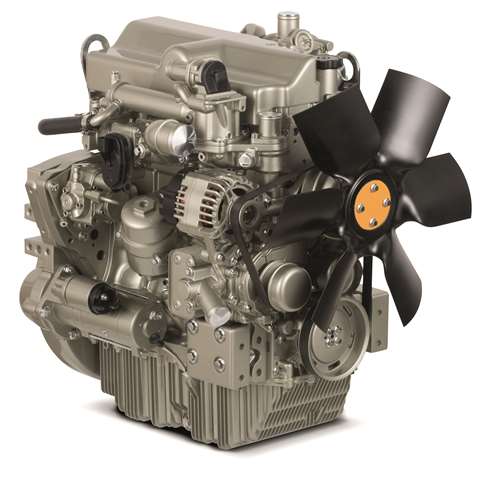
The new Syncro engines from Perkins have accumulated 10,000 hours of field testing
The constant tightening of emissions regulations has caused a good deal of consternation in the construction industry, from engine makers to OEMs, and on to rental companies and customers, forced to upgrade their fleets regularly.
Yet, as we march towards the third decade of the 21st century, a different attitude may be required.
Air pollution is a genuine problem, affecting the health of millions within the EU, while global warming is finally recognised as a critical problem for the entire world population.
Working with scientists who deliver the data that informs the progression of emissions reduction, engine manufacturers are conducting innovative research that will ultimately usher in a new era of cleaner and more efficient construction equipment.
The European Commission’s introduction of Stage V emissions standards for non-road machinery in 2019/20, will see the inclusion of the smallest compression-ignition engines (below 19kW) and all larger engines (greater than 560kW).
The regulations regarding particulate and NOx emissions are also being strengthened in Stage V, with a limit on the number of particulates for several categories of engines between 19 and 560kW.
Particulate filter
With this in mind, there will be greater adoption of diesel particulate filters (DPFs) and associated equipment for engines across all power ranges – and across all aspects of construction, too, with compressors, generators and pumps affected, as much as excavators, loaders and cranes.
In its white paper, The Road to Stage V Compliance and Beyond, Atlas Copco said the new regulations will limit not only the overall mass of particulate matter in the exhaust gas, but also the number of particles emitted through a particulate filter. This, said the firm, has caused engine manufacturers to test combinations of technologies, in the pursuit of greater emissions efficiencies.
The white paper states, “As with Stage IV, an exhaust aftertreatment system (EATS) with selective catalytic reduction (SCR) is needed. This means that diesel exhaust fluid (DEF) is injected into the exhaust stream to reduce the NOx levels.
“For Stage V, one solution would be to combine modules of diesel oxidation catalyst (DOC), diesel particulate filter (DPF), SCR and ammonia slip catalyst (ASC).
“This, together with the heat management devices on the engine, will provide excellent uptime through an optimised regeneration strategy.
“Furthermore, a common-rail fuel injection system featured in Stage V engines could lead to an improved fuel efficiency and optimised combustion process. The common-rail fuel injection system will also provide significant noise reduction, which is mainly important for machines such as generators that operate in urban environments.”
Positive outcomes
The white paper describes the different methods engine makers have used to reduce emissions and deliver enhanced performance, as well as predicting positive outcomes for end users.
It says, “Overall, the introduction of Stage V should be viewed as an opportunity for technological advancement, offering CAPEX (capital expenditure) savings through more compact design, better utilisation and higher resale value, and OPEX (operational expenditure) savings through less fuel consumption, lower maintenance costs and higher productivity.
“And as adoption of the new standards moves closer, Atlas Copco customers can be confident that a clearly defined route-map towards compliance is in place.”
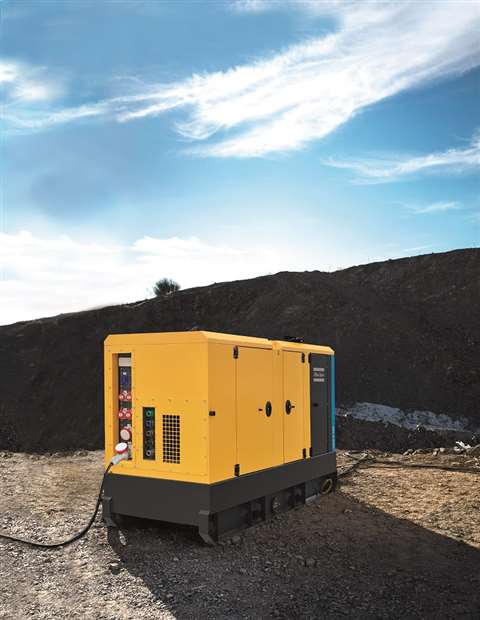
Looking ahead, Atlas Copco believes the perception of diesel engines being a major cause of reduced air quality is unlikely to change in the foreseeable future. With that in mind, European Union regulations will continue to drive engine makers towards non-polluting air, power and flow solutions, that rely on alternative power architectures such as electric, among others.
Coming back to engines on the market today, the best in terms of reliability will generally be the most efficient, making them also the least polluting.
All new engines spend time on test beds, being put through their virtual paces, but Perkins has taken the process up a level, installing and running its new Syncro engines in an internal fleet of nine applications, including a typical cross-section of construction, industrial and agricultural machines.
As well as cooling, system flow and electrical checks to validate the Syncro engine’s operation, Perkins needed to test the engine’s ability to start and perform in all conditions. It took 2.8 litre and 3.6 litre engines to Sweden to verify their performance in Arctic conditions, and to Texas, US, which can experience extreme heat during the summer months.
Real-world conditions
Engines were tested operating in real-world conditions for between six and ten hours a day, and have now accumulated 10,000 hours in the field.
Perkins’ machine validation lead Adriano Pacitti said, “The engine crossed the threshold of 10,000 machine hours in one calendar year with no major issues, which is a huge achievement and reassures customers that the engine, installed in their machines, will deliver consistently, and meet any challenge.”
The four-cylinder 2.8 litre model provides a maximum of 55kW without an SCR system, while the 3.6 litre achieves up to 100kW. Aimed at compact construction, agricultural and industrial machines, Perkins said the engines would drive productivity and savings.
The engines meet multiple global emission standards including EU Stage V and US EPA Tier 4 Final as well as other lesser-regulated standards.
Testing on the Syncro engines will continue well into 2019, before they move into production.
Over the past year, Cummins and Huddig have collaborated to field test the latest B6.7 Stage 5 engine in Sweden-based Huddig’s 1260D backhoe loader.
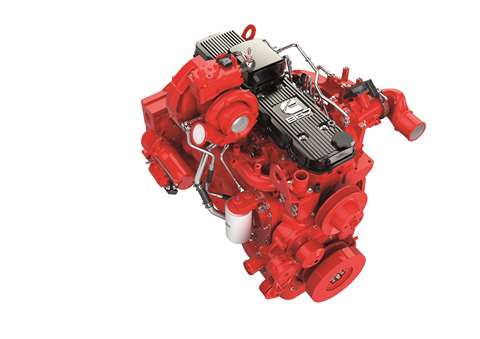
The latest generation of Cummins engines promise to deliver 10% more power
Current 1260Ds are equipped with Cummins QSB6.7 Stage IV engines, which use cooled exhaust gas recirculation (EGR) with a two-piece DOC and SCR aftertreatment system.
The Stage IV engine was a tight fit for the compact Huddig chassis and as a
result engine space was a key consideration for Cummins development of its Stage V line-up.
At Stage V, the B6.7 has EGR aftertreatment technology to remove emissions. The new Single Module system comprises the DOC and DPF one unit and is up to 30% lighter and 50% smaller than the Stage IV solution. Cummins said this delivered both short-term benefits, with less weight and easier installation for Huddig, and less maintenance and lower total cost of ownership for the operator.
Torque increase
On average, Cummins said that its latest generation of engines delivered 10% more power and 20% more torque across the 75 to 321kW range. Top-rated power for Cummins B6.7 moves up to 243kW, and peak torque rises to 1,375Nm – a 30% increase over that of Stage IV.
Cummins insisted that the engine’s higher power density resulted in a broader performance range and smoother torque curve for specialist vehicles with many diverse uses, such as Huddig’s 1260D.
End-user Bengt Thisner was involved in the test process and used the Cummins Stage V B6.7 powered Huddig 1260D to perform tasks such as land planning, excavation, snow removal and major building services.
He said, “The engine is performing smoothly and has good torque – which is extremely important. The smoothness and steadiness of the engine achieves harmony with the hydraulic which makes it easier to work with.”
Additionally, Cummins said that drivers involved in the Huddig 1260D field test programme noted that the machine required less fuel since the installation of the Stage V engine.
Steve Nendick, marketing director at Cummins, based at Darlington, UK, said, “Field tests are vital in proving new engine platforms. We were sure our new Stage V engine range would do as designed and deliver higher performance and more machine capability, but to have the Huddig team work the B6.7 in real-life scenarios and give great feedback is invaluable.”
Working prototype
As part of its E-Deutz strategy, German-based Deutz recently presented a modular electrification system that has been installed as a working prototype in two telescopic handlers – one with a hybrid drive and a second with a full-electric drive.
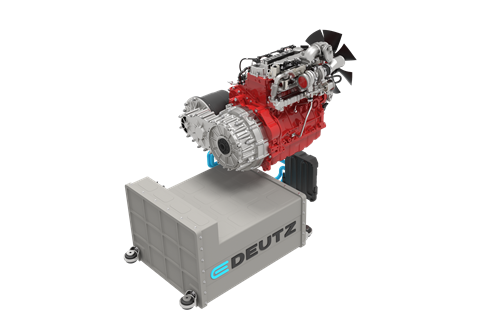
Deutz CEO Frank Hiller said the company was undertaking research into advanced drive systems, with a view to obtaining clean power.
While still active in diesel, biodiesel and gas development, he said Deutz was simultaneously working on multi-fuel solutions, hydrogen fuel, synthetic fuels and fuels obtained with renewable power sources. A growing portion of the company’s activity, however, is dedicated to the electrification of vehicles with solutions that range from mild hybrids at 48V up to fully battery-electric applications at 360V.
The two demonstrator vehicles that have been presented are Liebherr TL 432-7 telehandlers, normally powered by a 74kW Deutz TCD 3.6 diesel engine.
At Deutz, Markus Müller, senior vice president, product development and technical customer support, explained that the hybrid drive vehicle was designed with the downsizing of the original internal combustion engine to a 56kW Deutz TCD 2.2 diesel and the addition of a 48V, 20kW electric motor, and so the total output of the powertrain is 76kW.
The mechanical connection between the electric motor and the diesel engine is made by a transmission with an integrated decoupler that allows the diesel engine to be disconnected from the electrical system when powering the vehicle in all-electric mode.
10kWh battery
The energy required for this is generated by raising the diesel engine’s load point and storing the energy in a 10kWh capacity battery.
The all-electric telehandler is powered by a 360V system with a 60kW electric motor. The vehicle is equipped with a battery with a 30.5kWh capacity, so the machine can work even for lengthy periods at high load.
Deutz said both demonstrator vehicles were fully functional and not inferior to the original diesel-powered model in terms of performance.
These prototypes have been developed by Deutz in co-operation with Torqeedo, the German specialist for integrated electric and hybrid drives for boats that Deutz acquired in September 2017.
Torqeedo’s expertise in e-drives is being transferred to off-road applications, and the company’s engineering services are used to expedite the electrification of the Deutz engine portfolio.
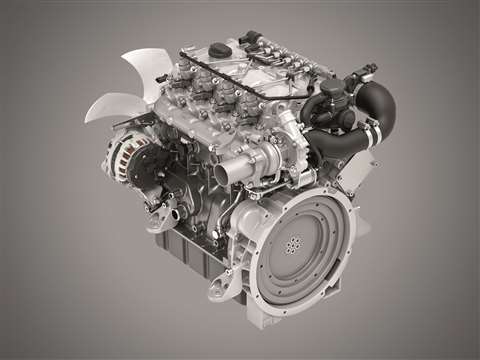
From its headquarters in Ruhstorf, Germany, Hatz announced the start of production of its 3H50TIC three-cylinder engine last July. The engine is part of the seven-strong H-series engine family, which runs from 18.4kW to 62kW.
Hatz said the engine range would offer solutions for equipment across the construction board, and in all markets worldwide.
Higher output
The H-series promises higher power output, efficiency and torque, with reduced engine capacity, lower weight and smaller size, as well as lower fuel consumption and emissions. The gains are said to be a result of a combination of a consistently applied downsizing principle and the quality of the engine’s components, such as sturdy turbochargers and the Bosch off-highway common-rail fuel injection system, as well as high-quality elements from Mann+Hummel and Mahle, Behr and Kolbenschmidt/pierburg.
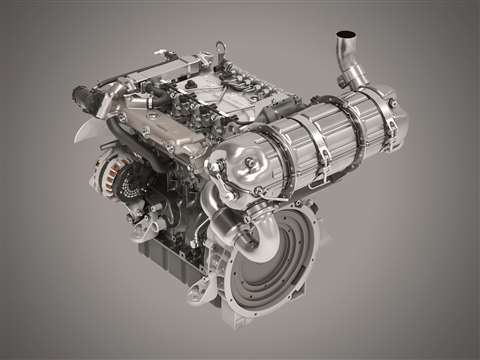
The 3H50TIC has a power range from 19kW up to 42kW, which compares with the 37kW to 55kW power range of the four-cylinder 4H50TIC engine that started series production in 2014.
The 3H50TICD and 4H50TICD engines meet EU Stage V regulations and are equipped with a DPF, with power output figures identical to those of the TIC versions. The three-cylinder 3H50T engine has been developed for machinery and vehicles that can be powered by a very high torque engine with a power output of less than 19kW. It fulfils the EU Stage V regulations without a DPF.
Hatz said the compact strength of the 3H50T meant it could be used by manufacturers to replace larger engines, saving them having to redesign equipment to comply with EU Stage V regulations.
The H-series engines are available in Open-Power Unit versions – fully turnkey engines, complete with radiator, hoses, wiring and electronics ex-works.




